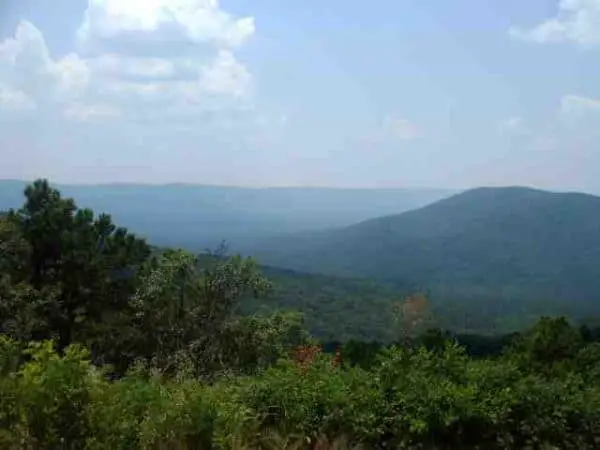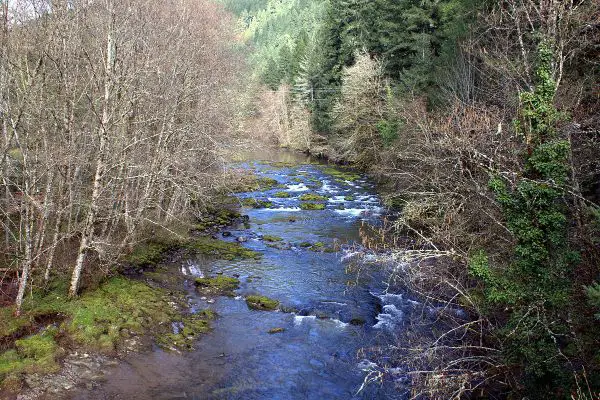
Oklahoma is not a very famous state for being home to many lost treasures. But that does not mean that there are no hidden or buried treasures in Oklahoma.
The state has its fair share of gold rushes and notorious outlaws who have stashed their loot in the mountains, rivers, and caverns of Oklahoma. According to many locals, there is a common saying that there is more treasure to be found in Oklahoma than in the rest of the entire Southwest US.
Quick Recommendation for treasure hunters: There are so many ways and tools that can help you find treasures. The tool that I actually recommend is using a Metal Detector. Indeed, while there so many expensive models out there costing 1000s of dollars, I still recommend using a mid-level machine that should not cost you that much. In fact, if you don’t have a big budget, I recommend using this quality metal detector that should be affordable for most average hobbyists out there. It has more than enough features you will need to find most treasures buried in the ground.
Without further ado, here are some of the most famous lost treasures of Oklahoma.
1. Lost Treasures of Jesse James
Jesse James is one of the most famous and most written about outlaws in the Wild West. Jesse James and his brother Frank had strong ties with Oklahoma as his brother used to call the town of Fletcher his home.
While they were here and they operated all through the Midwest, they robbed numerous trains and banks. This made them some of the wealthiest outlaws of their time.
There are several lost treasure stories associated with Jesse James in Oklahoma. Here are some of the most popular ones.
- Buzzard’s Roost Treasure: Buzzard’s Roost is the name given to an outcropping of rocks located near the town of Cement in Oklahoma. There are many stories around these parts that Jesse and his gang robbed a Mexican Mule Train that was carrying gold in this area. The gang is said to have buried this gold somewhere in this area. It is said that there was, or perhaps still is, a treasure map carved into the rocks with a pistol, bow, and arrow showing the way to the next clue. There have also been some artifacts that have been found in this area in the past, including buckles from the packs of the mule train and a kettle. Some rumors also suggest that Frank James spent time here in the early 1900s in the Keechi Hills looking for a lost treasure he and Jesse buried in the 1870s.
- Jesse James and the Witchita Mountain Treasure: This story is very similar to the previous one of Buzzard’s Roost, and many believe that it might even be the same one. This legend states that Jesse James robbed a Mexican Caravan in 1872 near the Cache River close to Geronimo in Oklahoma. It is said that he escaped with $1 to $2 million in gold bullion. He allegedly buried the treasure somewhere in the Witchita Mountains. Many have searched for this treasure, but it is yet to be discovered.
- Treasure buries on the banks of the Neosho River: The Neosho River flows through the northeastern part of Oklahoma. Legend has it that Jesse James buried a large cache of loot somewhere on the banks of that river near the town of Miami in Oklahoma.
2. Hoard of Kiamichi Mountain

It is said that very near to the town of Cloudy in the Kiamichi Mountains, there is a treasure buried that is worth over $80,000.
The treasure consists of gold coins that were buried by an old miner. Apparently, he buried the cache in a copper box near his cabin. The area is located around a mile from the junction of the Texas-Arkansas-Oklahoma state lines.
3. Treasure of Three Forks
Three rivers, the Verdigris, Grand, and the Arkansas, come together to form the Three Forks. In the early 1800s, the area of Three Forks used to be a prominent trading post. During the Civil War, a wooden fort was located here, and there have been several rumors that there are multiple treasures buried by outlaws in this area.
4. Treasure of Scullyville

This ghost town of Scullyvulle was located on the southern side of the Arkansas River, around 12 miles south of Fort Smith.
During the Civil War, the town of Scullyville was used as a Confederate. Federal troops eventually destroyed the fort.
There are stories that the Confederates buried several treasures in the town before they fled from the area.
5. Treasure of Union Mission
Union Mission is located around ten miles southeast of Chouteau, on Route 69. A Presbyterian mission was founded here in 1819, and there are many stories of Indians having buried many treasures in the area of the Mission.
The loot was said to be stolen from the white men who lived in and around the area.
6. Treasure hidden at the Sugarloaf Peak

Sugarloaf Peak is located just ten miles northwest of Boise City. There is a famous lost treasure story in this area about $2 million in gold bullion being buried by French miners.
This story has been passed on from generation to generation. Apparently, the miners hid their cache and then traveled into Boise City to purchase supplies.
However, the four were killed in a saloon gunfight while they were there, and the secret of the buried treasure disappeared with their death.
7. The Lost Spanish Gold Mines of Oklahoma

Located in Devil Canyon, north of Altus, there are said to be numerous lost gold mines that date back to the Spanish Inquisition.
These mines were mostly all sealed up after the Spaniards moved away. Sometimes, though, the Indians murdered the Spaniards and then sealed the entrance to the caves with the bodies of the Spaniards left inside.
So alongside the treasure, you might be in for a shock to find some old bones as well.
8. The Lost Treasure of Black Mesa Plateau

The Black Mesa Plateau is located in Kenton, and it was a popular hideout spot for numerous outlaws. It is believed that the outlaws buried several treasures in the large caverns on the mesa.
9. Treasure buried near Wilburton
Somewhere near Wilburton, an Indian outlaw called Black Face is said to have buried three treasures of stolen loot on a dry creek bed in the hills that fall north of this town.
10. Treasure of the Ghost Town of Standing Rock

The town of Standing Rock used to be a thriving place before 1964. Then a dam was constructed, and Lake Eufaula, together with a reservoir, flooded Standing Rock and a few other towns.
After the floods, a silver bar was found near the base of a rock that was a popular camping spot used by westward travelers.
It has been said that many more silver bars are still present in the area. Standing Rock and the other towns that were flooded are located on the northern bank of Piney Creek
11. Treasure at Fort Sill
Fort Sill was an old trading post. Legend has it that an outlaw hid four bags of gold and silver coins inside a well inside the fort, which has been covered since then.
The approximate worth at that time in 1892 was $100,000. The coins were stolen from a stagecoach by the outlaw, and today will be worth a great amount if anybody finds them.
12. Mill Creek Treasure
In a cave located near Mill Creek, in the Arbuckle Mountains, there is said to be a treasure of the Army’s stolen payroll. The treasure consists of gold and silver coins.
The payroll was robbed by outlaws when they attacked the army supply train and then hid the coins in the cave.
13. Treasure of the Cache River

There are many stories related to the Cache River, and it is believed that it may still house a treasure of gold bullion. Mexicans fleeing from a band of Indians are said to have buried their treasure somewhere near the ruins of the old Pecan School, which is located approximately 15 miles south of Lawton on the Cache River.
14. Civil War Treasure near the Blue River

During the Civil War, four barrels of gold coins were captured from two Federal wagons by the Confederates during a battle in Kansas.
The rebels were attacked by outlaws in Oklahoma, and the gold coins were hidden in a cave close to the Blue River, which is around five miles northeast of Brown.
The outlaws murdered the Confederates, and the location of the coins remains a secret to date.
15. Treasure in the Gyp Hills
In 1933, Samuel Stewart was said to have buried $5,000 in $20 gold coins in the Gyp Hills on his farm near Butler.
He hid the coins in a metal box, in a cave-like niche in the hills. But in 1935, a flood changed the terrain, and he could never locate the cache again. The cache is said to be located somewhere in the Gyp Hills itself.
Final Thoughts
Hopefully those lost treasures in the state of Oklahoma got you a little bit excited to start your own adventure to search for treasures yourself, whether in Oklahoma or any other state.
Also, if you are aware of any other lost treasure in Oklahoma or you’ve got any real stories you want to share, let me know so I can feature it in this article.
